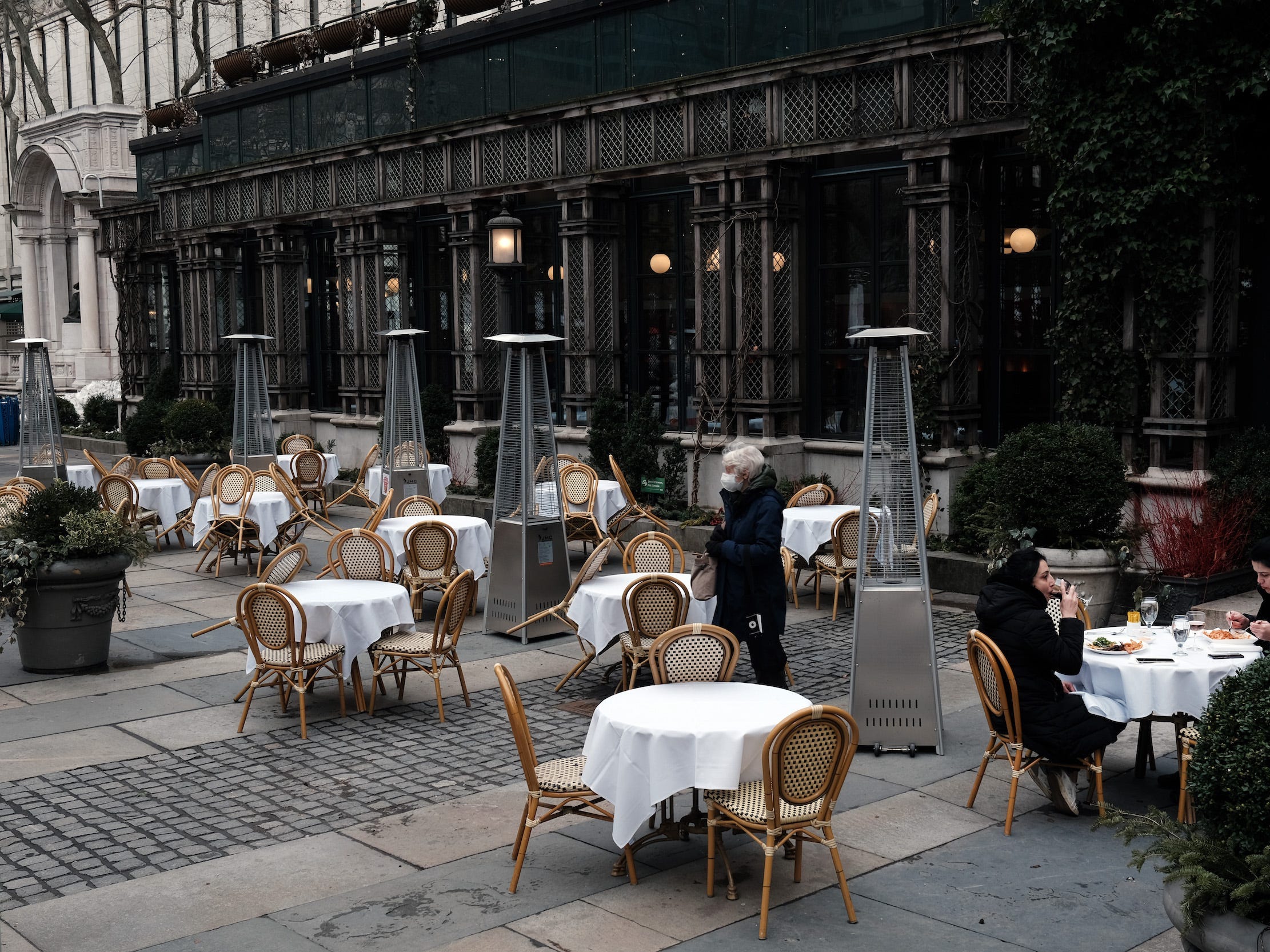
Spencer Platt/Getty Images
- 9.7 million people are actively seeking work, but businesses are reporting major labor shortages.
- The New York Times reported on four reasons that might account for that disconnect.
- These include jobless benefits disincentivizing people to work and pandemic health concerns.
- See more stories on Insider's business page.
The pandemic cost millions of Americans their jobs, and while the Bureau of Labor Statistics found that 9.7 million of them are actively seeking work, businesses are reporting significant labor shortages.
Weekly jobless claims are at a pandemic-era low just this past Thursday, but businesses, particularly in the restaurant and service industries, are still struggling to hire. The American Restaurant Association has found that staffing at full-service restaurants remains down 20%, or 1.1 million openings, from the year-ago level, but staffing is even down at firms that want to rehire workers.
Taco Bell is looking to fill thousands of open roles and is interviewing candidates en masse in parking lots, while McDonald's has cited a labor shortage in saying that some dining rooms may not reopen this year, Reuters reported earlier this month.
Experts think the labor force is unlikely to recover its previous form. "There's no guarantee that the people whose jobs have been permanently eliminated will be able to find work elsewhere," Nancy Vanden Houten, lead economist at Oxford Economics, previously told Insider. "At the same time, there's a risk that labor force participation won't return to what it was prior to the pandemic. We might still experience shortages of workers."
The Wall Street Journal reported on April 11 that fear is a main driver behind this labor shortage, as people don't want to risk returning to the workplace and contracting COVID-19. The New York Times' Neil Irwin sees other possibilities.
While it's hard to pinpoint a definitive reason for the disconnect between Americans looking to reenter the labor force and a "potentially catastrophic" labor shortage, Irwin highlights four main possibilities, and fear is a big one:
(1) Unemployment benefits are a disincentive
President Joe Biden's $1.9 trillion stimulus plan included weekly $300 unemployment benefits through September 6 to help Americans struggling financially during the pandemic. While many lawmakers and Americans lauded this provision as a form of much-needed pandemic relief, some experts have argued that these benefits might actually discourage unemployed workers from returning to the labor force.
Toby Malara, government affairs counsel at the American Staffing Association, told Insider in February that while unemployment have been "paramount" in helping people during the pandemic, it's important to find a balance that doesn't disincentivize people from returning to work.
"We began to see that some employees were in a position where they were literally making four, five sometimes $6 an hour more on UI (unemployment insurance) with the pandemic bonus," Malara said. "It did not make sense for them to go back to work."
In other words, if unemployment benefits are too generous, workers may not go back to work because they are making more money simply from government aid.
(2) COVID-19 health concerns
To date, 565,000 people in the US have died from COVID-19, so it's no surprise that the possibility of contracting a deadly disease would discourage people from going back to work. But vaccinations can help with this.
Insider reported on Friday that as more vaccine shots go into arms, consumer sentiment is the strongest it's been in a year, and half of surveyed consumers said they expected unemployment rates to decline. These responses were mainly driven by optimism surrounding the stimulus and the accelerating vaccination rate.
The New York Times noted that it's easier for a person to have health concerns and stay out of the work force when unemployment benefits are generous.
(3) At-home care is still needed
The Census Household Pulse survey found that the main reason adults can't return to the workforce is because they still need to stay at home with their kids while they take online classes. According to the late March surveys, 6.3 million people were not working because they had to take care of their children at home, and 2.1 million more people were at home caring for an older person.
Biden's infrastructure plan might help change that. The $2.3 trillion plan unveiled two weeks ago included $400 billion toward home and community care for the elderly and disabled; it's set to be joined by a second plan that is likely to be unveiled this month and will include more care-economy measures, like spending to increase women's participation in the work force.
(4) Workers are holding out for higher wages
To account for financial struggles, large US companies have publicly raised their minimum wages during the past few years. Costco recently raised its minimum wage to $16 an hour, and Target and Amazon have raised their wages to $15 an hour - a wage that many Democratic lawmakers want to become the federal standard.
But these big companies raising their wages place difficulties on workers in service industries. For example, tipped workers, like waiters and bartenders, could easily lose a whole day of earnings if bad weather shuts down outdoor dining, which could cause them to consider switching industries for a steadier income.
Biden's infrastructure plan proposed eliminating the subminimum wage, which would ensure that service workers won't have to rely on tips.